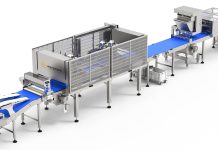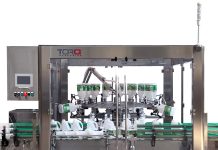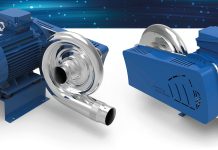Effect of different bentonite labels on the protein profi le of two white wines.
 During the shelf life of a white wine the content of proteins is a major factor of instability: if proteins are present in high concentrations they play a key role in the colloidal stability and clarity of white wines [1,2]. Stabilization treatments are essential to ensure limpidity in the long time term and to prevent the formation of deposits in the bottle. Wine proteins generally derive from both the grape clusters and autolyzed yeasts [3, 4]. Immunological [3] and electrophoretic [2] methods have demonstrated that the majority of wine proteins originate in the grapes. Most of these proteins have been identified as grape pathogenesis related [5-7]. They are synthesized in grapes during ripening and constitute a defense mechanism of plants against fungal attack [8]. Wine instability may also be influenced by non-protein factors, including wine pH[5], ethanol content [9], concentrations of polysaccharides, polyphenols, flavonols, sulfates and metal ions[5,7]. The addition of sodium bentonite, a montmorillonite clay, is universally employed throughout the wine industry for the prevention of white wine protein haze, in a process known as bentonite fining.
During the shelf life of a white wine the content of proteins is a major factor of instability: if proteins are present in high concentrations they play a key role in the colloidal stability and clarity of white wines [1,2]. Stabilization treatments are essential to ensure limpidity in the long time term and to prevent the formation of deposits in the bottle. Wine proteins generally derive from both the grape clusters and autolyzed yeasts [3, 4]. Immunological [3] and electrophoretic [2] methods have demonstrated that the majority of wine proteins originate in the grapes. Most of these proteins have been identified as grape pathogenesis related [5-7]. They are synthesized in grapes during ripening and constitute a defense mechanism of plants against fungal attack [8]. Wine instability may also be influenced by non-protein factors, including wine pH[5], ethanol content [9], concentrations of polysaccharides, polyphenols, flavonols, sulfates and metal ions[5,7]. The addition of sodium bentonite, a montmorillonite clay, is universally employed throughout the wine industry for the prevention of white wine protein haze, in a process known as bentonite fining.
A number of alternative techniques to bentonite fining (ultrafiltration, addition of proteolytic enzymes, fl ash pasteurization, and use of alternative adsorbents) have been investigated for the removal of proteins from wine, but have shown limited success to date [8]. Bentonite, which carries a net negative charge at the pH of wine, interacts electrostatically with the positively charged wine proteins, inducing their flocculation [7,10]. Bentonite has been shown to be nonspecific for proteins, as it may remove other charged species or aggregates [10]. This work aims to quantify the protein fractions of two international, unfined white wines and to investigate the effects of five different labels of sodium bentonite on their protein profiles [11]. In order to identify the best bentonite label, able to carry out a selective heat-unstable protein removal, the physical properties of the bentonite samples and the wine characteristics were determined.
Experimentation
In this study Chardonnay and Sauvignon blanc wine samples originating from 2008 winemaking were used. For the treatment of protein stabilization, five different labels of activated sodium bentonite (S, TG, PW, GW and GW2) were used. S and TG were the most popular, commonly used for wine clarification. The S bentonite used in this study was a powder, and the TG formulation was granular. PW was a dust bentonite, GW and GW2 were grainy.
The bentonites were characterized through the determination of the specific surface area (SSA), swell index and physicochemical parameters according to the methods published by the Organisation International de la Vigne et du Vin [12]. The wine was characterized by the following parameters: alcohol degree, reducing sugars, dry extract, pH, titratable and volatile acidity, free and total sulfur-dioxide, color at 410 nm, and nitrogen content according to the “Recueil des methods internationals d’analyse des vins et des mouts” [13]. Experimental tests were preceded by a preliminary evaluation, in order to identify the optimal amount of bentonite to perform the tests choosing it among the following values: 20, 50 and 100 g/hl. The optimal dose, for each bentonite sample, was added in double replication to each wine, maintaining two untreated wine samples as controls. After fining, heat stability test and total protein extraction were performed on limpid liquid fractions. The protein extracts were subjected to SDS PAGE and gel bands were quantified and identified by MALDI-TOF mass spectrometry at CNR-ISPA Institute (Colleretto Giacosa, TO, Italy).





